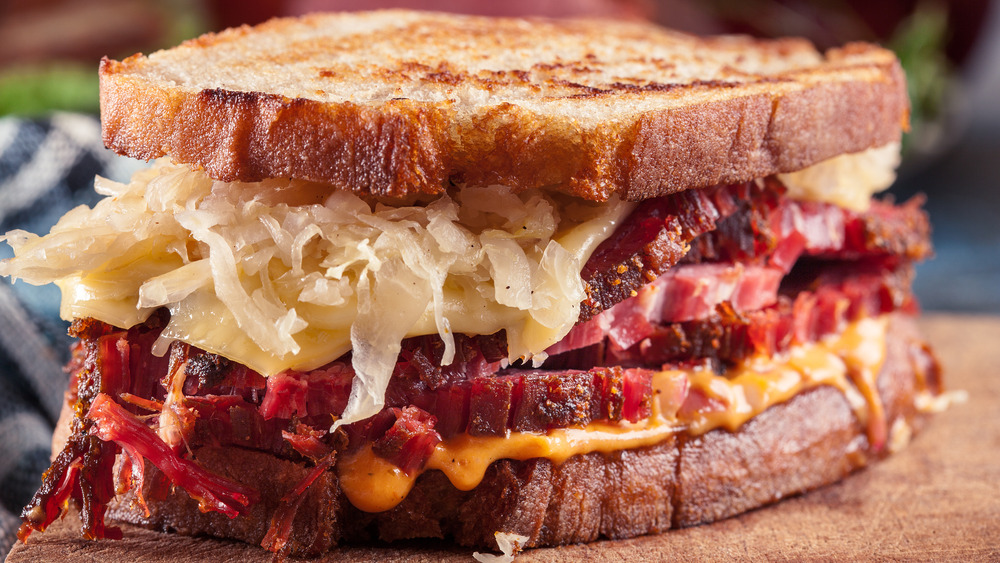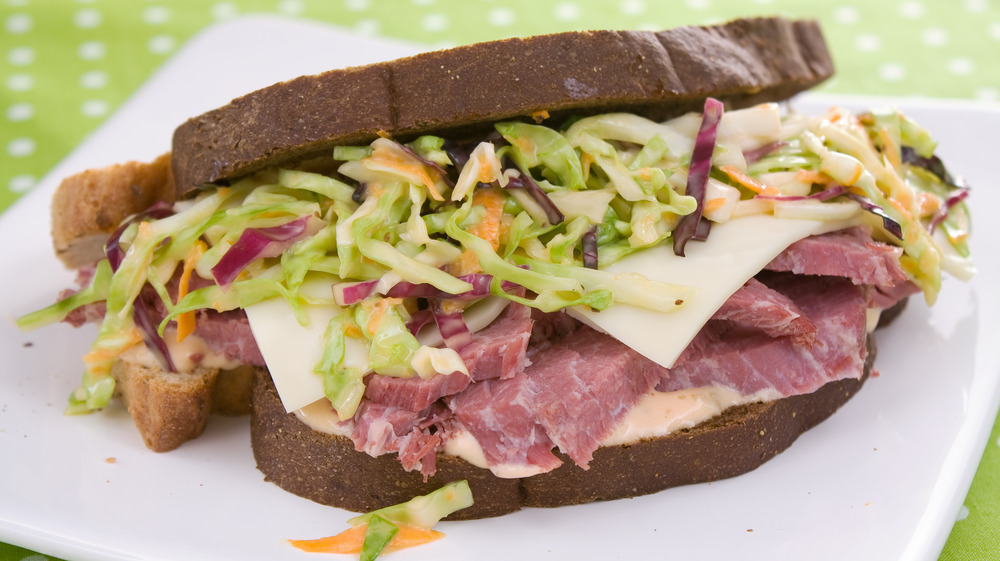The Real Difference Between Reuben And Rachel Sandwiches
Although it's been contested, the origin of the Reuben sandwich is attributed to Arnold Reuben, founder of Reuben's Restaurant and Delicatessen in New York. Reuben first served a similar sandwich in 1914 to famous silent actor Annette Seelos. When Seelos suggested he name it after her, Reuben reportedly replied, "Like hell I will, I'll call it a Reuben's Special" (via Reuben's Delicatessen). That sandwich, according to Reuben's daughter, featured biased-sliced rye stuffed with Virginia ham, roast turkey, Swiss cheese, coleslaw, and Reuben's Russian dressing.
Other accounts (via The Kitchen Project) trace the sandwich to Reuben Kolakofsky, a Nebraska grocer, who requested corned beef and sauerkraut sandwiches from the hotel chef where he gathered for a weekly poker game. That chef, Bernard Schimmel, went on to hone the creation, adding rye bread, Russian dressing, and Swiss cheese. Schimmels's sandwich most closely mirrors the Reubens we enjoy today: That is, corned beef, Swiss, sauerkraut, and Russian dressing, on rye and griddled in butter (via Cooks Info).
Why has the classic Reuben endured for so long? According to Element 29 Deli, the Reuben is an example of a perfectly balanced sandwich: The earthy, pungent rye is mellowed by butter. Salty corned beef is enhanced by the sourness and acidity of the pickled cabbage and the sweetness of the melted Swiss. On top of all of that, the Russian (sometimes Thousand Island) is made of mayonnaise, ketchup, sweet relish, and onion. It's another combination of all of these elements: sweetness, earthiness, sourness, and saltiness.
Rachels feature pastrami and coleslaw
Reubens represent sandwich perfection. So, could its sister sandwich, the Rachel (not to be confused with the flipped hairdo made famous by Jennifer Aniston in Friends) be a match for such deliciousness? Let's start with what the Rachel is: The Rachel substitutes the Reuben's corned beef for pastrami and the sauerkraut with another cabbage classic, coleslaw.
The Rachel is true to the Reuben in its use of rye bread and Swiss cheese. According to My Jewish Learning, the Rachel deserves big points for its use of pastrami, one of the most flavorful meats you can put between two slices of bread. (The site points out, however, that some Rachels feature a healthier turkey alternative, but come on, pastrami!)
Like the Reuben, the Rachel is griddled in butter like a grilled cheese sandwich (via The Spruce Eats). A tip if you want to make either sandwich at home: Drain the sauerkraut and coleslaw very, very well. Soggy bread will ruin the experience. Both are delicious served with a sour pickle and potato salad or chips.

